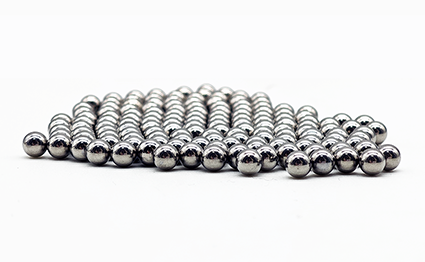
 Home > News
Home > NewsSteel ball manufacturing has evolved significantly over the past few decades, driven by advancements in technology and the need for higher precision and efficiency. These small but crucial components are essential in various applications, including bearings, automotive parts, and industrial machinery. This article explores the latest technological trends that are shaping the steel ball manufacturing industry.

One of the most significant trends in steel ball manufacturing is the increasing use of automation and robotics. Automated systems are now capable of handling tasks such as material handling, inspection, and packaging with high precision and speed. Robotics has reduced the need for manual labor, minimized human error, and increased production efficiency.
Consistency and Precision: Automated systems ensure that each steel ball meets stringent quality standards.
Increased Production Rates: Robotics can operate continuously, significantly boosting production output.
Cost Reduction: Reduced labor costs and fewer defects lead to overall cost savings.
The development of new materials and alloys has had a profound impact on the steel ball manufacturing industry. High-performance steels with enhanced properties such as corrosion resistance, wear resistance, and high strength are now commonly used. These materials extend the lifespan of steel balls and improve their performance in demanding applications.
Nanostructured Steels: Incorporating nanoscale structures to enhance mechanical properties.
Ceramic Coatings: Applying ceramic coatings to steel balls to improve hardness and wear resistance.
Advances in precision machining and grinding technologies have enabled manufacturers to produce steel balls with exceptionally tight tolerances and superior surface finishes. CNC (Computer Numerical Control) machines and advanced grinding techniques ensure that each ball is produced to exact specifications, reducing variability and improving performance.
CNC Machining: Utilizes computer control to achieve high precision in shaping and finishing steel balls.
Superfinishing: A process that improves surface roughness and roundness, essential for high-performance applications.
Modern steel ball manufacturing heavily relies on sophisticated quality control and inspection systems. Non-destructive testing (NDT) methods, such as ultrasonic testing and eddy current testing, are employed to detect internal and surface defects without damaging the product. Additionally, automated optical inspection systems provide real-time feedback on the quality of the steel balls.
Automated Optical Inspection: Uses cameras and software to detect surface defects and dimensional inconsistencies.
Real-Time Monitoring: Continuous monitoring of the production process to ensure consistent quality.
Sustainability has become a crucial consideration in modern manufacturing. Steel ball manufacturers are adopting environmentally friendly practices to reduce their carbon footprint and minimize waste. This includes the use of energy-efficient equipment, recycling of materials, and implementation of lean manufacturing principles.
Energy-Efficient Machinery: Utilizes advanced technologies to reduce energy consumption during production.
Material Recycling: Reusing scrap metal and other materials to minimize waste.
Although still in its nascent stage for steel balls, additive manufacturing (3D printing) holds potential for producing complex geometries and customized solutions. This technology can be particularly useful for producing prototypes and small batches of specialized steel balls with unique properties.
Customization: Ability to produce tailor-made steel balls for specific applications.
Reduced Lead Time: Faster production of prototypes and small batches.
The steel ball manufacturing industry is experiencing a technological renaissance, driven by automation, advanced materials, precision machining, rigorous quality control, sustainable practices, and emerging technologies like additive manufacturing. These advancements are not only enhancing the quality and performance of steel balls but also making the manufacturing process more efficient and environmentally friendly. As technology continues to evolve, we can expect even greater innovations in the future, further propelling the industry forward.
By staying abreast of these trends, manufacturers can ensure they remain competitive in an increasingly demanding market, delivering high-quality steel balls that meet the evolving needs of various industries.
View More(Total0)Comment Lists